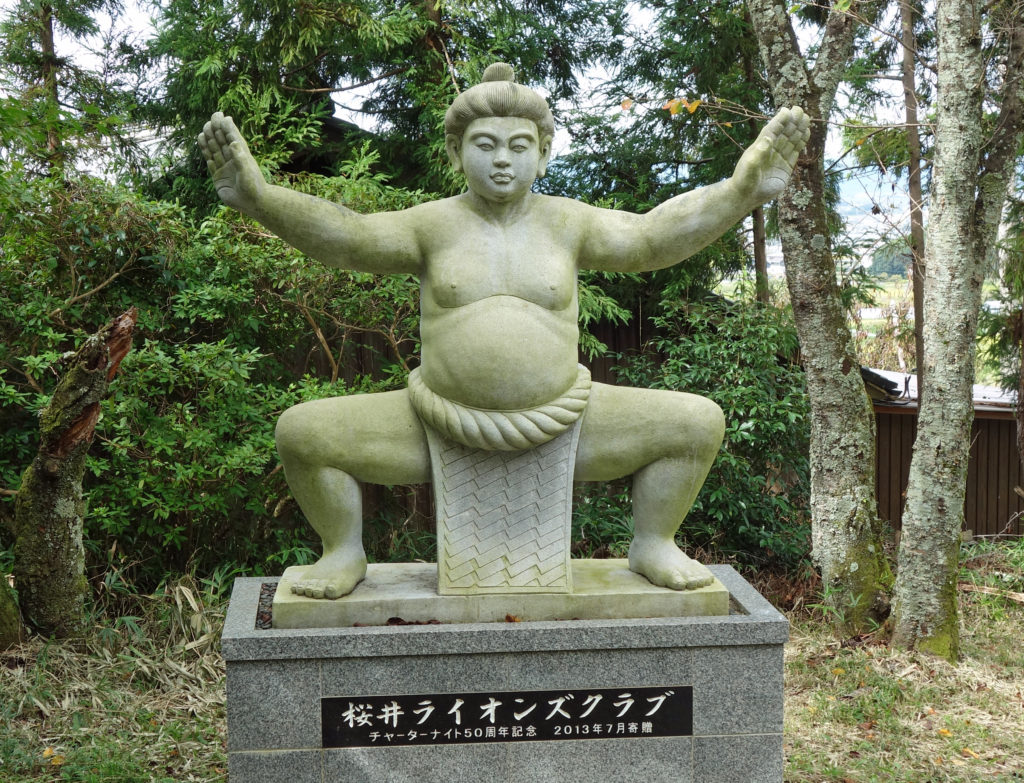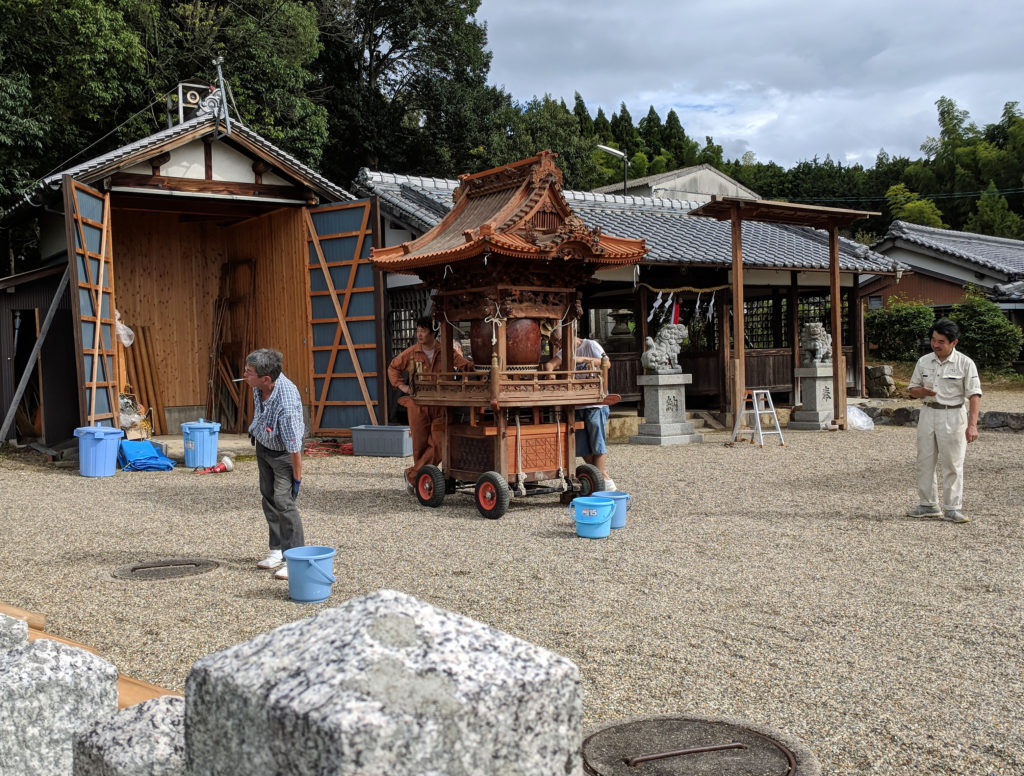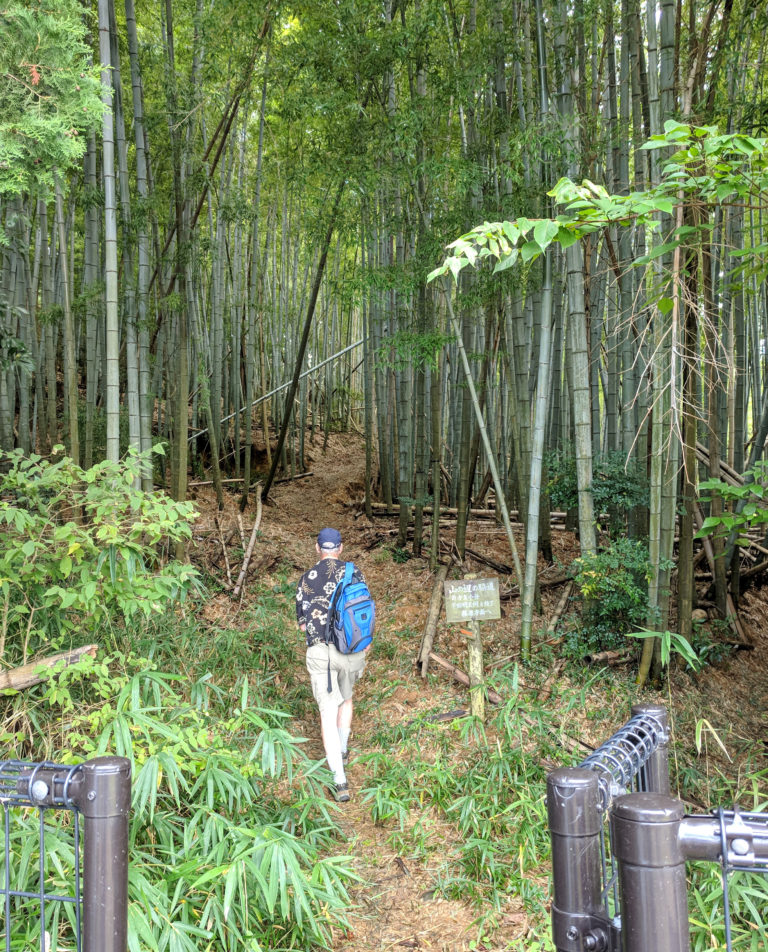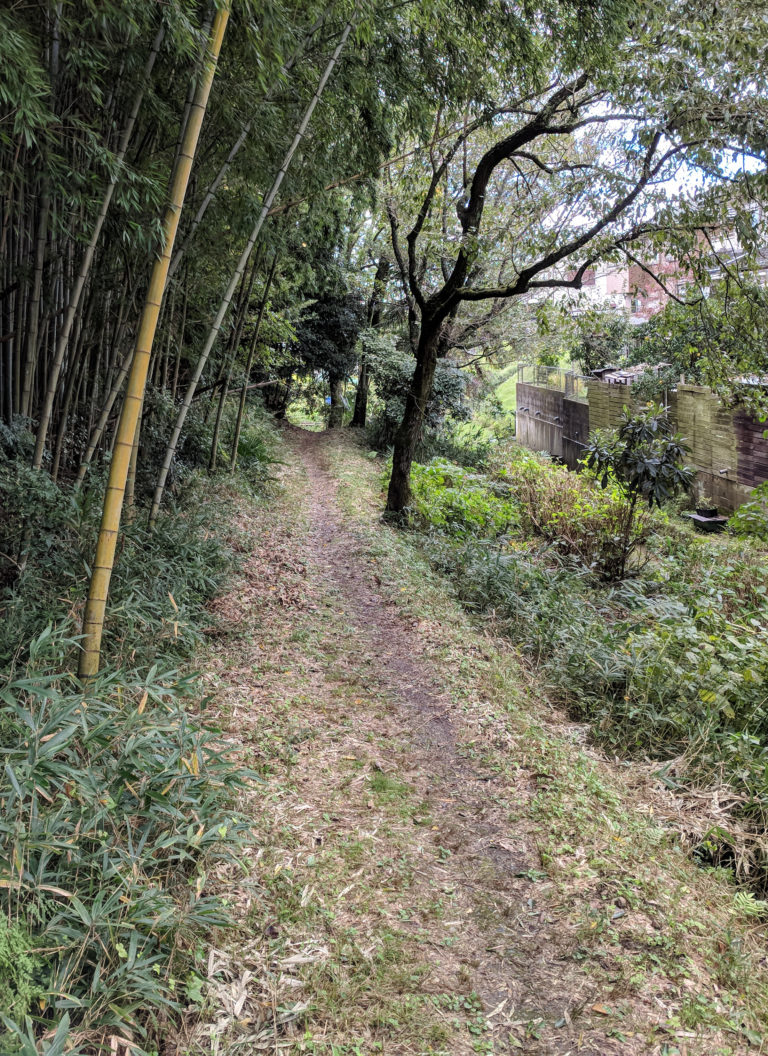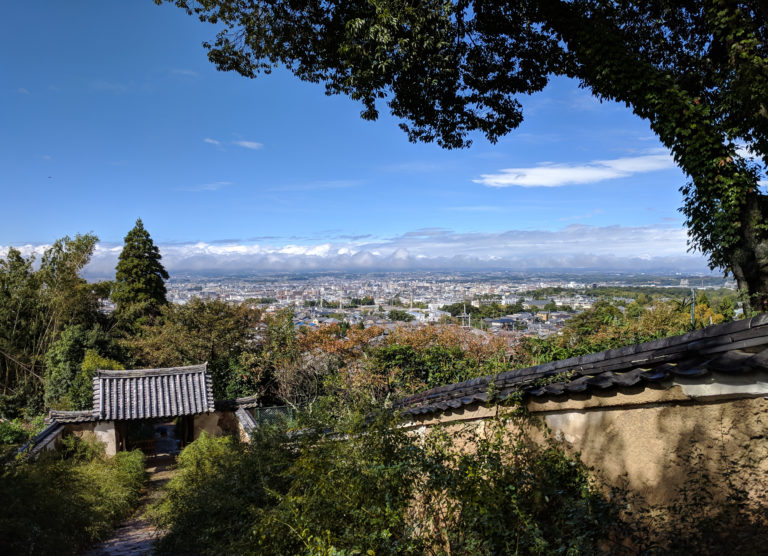Japan Trip Diary
Introduction
This is my travel diary for the trip Jan and I took to Japan with Richard and Patti O’Hara in October 2018. We focused on Nara, the first capital of Japan, with a couple days in Tokyo at the end and half a day in Kyoto.
Many thanks to Richard O’Hara who planned the trip and provided a detailed and interesting itinerary for our days in Nara. His knowledge of Nara, the Yamanobe-No-Michi trail, and Japanese temples, shrines, and poetry monuments is extensive. His made it possible for us to see and appreciate many sites rarely seen by foreign tourists. His work made the trip much richer.
Thanks too to Patti O’Hara and my wife, Jan Fulwiler, for being such pleasant and fun traveling companions. Traveling for long periods in a foreign country always presents obstacles and problems. Patty and Jan helped turn our missteps, such as buying lemonade flavored milk, into humorous incidents we will laugh about for years.
This travel diary is all from my perspective. If you want Jan’s views you will need to talk with her. Also, there may be some minor errors in names. It was hard keeping all the temples and shrines straight.
Day 1 and 2 - Travel from Madison to Nara, Japan
We left Madison about 6:30 in the morning for our connecting flight in Detroit. The nonstop from Detroit to Narita Airport took off a little late at about 12:30. It was a 13 hour flight! Got caught up on some reading (Graham Green – “Ministry of Fear” and Francis Fukuyama’s new book “Identity”). We splurged and upgraded to economy comfort. It was worth it. We had lots of leg room. Delta clearly has been working on food quality. They had American and Japanese selections. Both were a step up from what we usually get.
There were no problems with arrival and taking a shuttle bus to our hotel – Nikko Narita. We arrived at about 3:00 pm and stayed up till 6:00 in hopes of getting a full night’s sleep.

Day 3 - Narita Airport to Nara with a stop in Kyoto
We met Richard and Patti at the hotel for breakfast. Richard prepared a spiral bound book for our trip and gave us a copy. We knew we were in experienced hands. The book had lots of helpful information about what we would be seeing with suggestions for what to see when we would be on our own.
We took the Narita Express train from Narita airport to the Tokyo train station. From there we got the bullet train to Kyoto. Getting the right tickets and finding the right train was a bit confusing. Several people were very helpful and it all worked out. Several hours later we were in Kyoto.
We stored our luggage in several lockers at the train station and took a bus to one of the many famous temples in Kyoto – Kiyomizu-dera. We walked through narrow old streets to get to the temple. Many women were in kimonos. We ate lunch at a small pancake restaurant. The pancakes are crepes with a wide mixture of Japanese ingredients; certainly different and not to be confused with standard pancakes. The temple was in the hills and undergoing a major reconstruction. It was crowded. The temple crowds were nothing compared to the packed bus back to the train station. I was jammed in by people on all sides and couldn’t move any direction.
We retrieved our luggage after a little adventure finding the storage lockers; the Kyoto train station is very large and multi-leveled. We caught a local train from to Nara. A short taxi ride got us to our Airbnb. It was late, we were exhausted, and were a surprised to find the door unlocked and the key inside the house. I learned Japan has an extremely low crime rate.
(Our house is a story in itself. We referred to it as the “cuckkoo house” because of the chirping walk/don’t walk sign outside our window.)
Day 4 - first day on the Yamanobe-no-michi Trail
Rich and I met our guide, Taka, at the Nara train station and took a train from Nara to Tenri. Taka was a retired industrial rechargeable battery engineer who worked in Osaka. We walked up a long covered shopping street and past the Tenri University which is a very prominent part of the town. It was raining when we started and rained on and off all day.
Our first attraction was the Isonokami Jingu Shrine. This is a Shinto shrine and is one of the oldest in Japan. As with most of the larger shrines and temples we saw, they have a long history often many hundreds and even a thousand years. This shrine had many beautiful chickens living at there. Taka said they are sacred and not eaten.
We also visited the Yagoti shrine. This was much smaller and in some disrepair.
We ended the day at the Tenri Trail Center. Richard knew the chef there from a previous trip. We had tea with him and talked with him about the trail. The Tenri Trail Center had sold out of Richard’s book on the poetry monuments, “Precious Stones: The Poetry Monuments of the Yamanobe no Michi.” The chef gave us a ride in his car back to the train station and we made our way back to Nara.
The Yamanobe-no-michi Trail
(Adapted from https://www.japan-guide.com/e/e4189.html)
The Yamanobe-no-michi Trail (山辺の道) is an ancient road in Nara Prefecture and the oldest road mentioned in Japanese records. Today, it is a pleasant hiking trail through rural landscape, connecting multiple shrines, temples and other sites of interest. The most popular section stretches approximately eleven kilometers from Omiwa Shrine in Sakurai City to Isonokami Shrine in Tenri City, from where the trail continues northwards to Nara City.
The Yamanobe-no-michi is predominantly a dirt trail, but sometimes becomes paved as it meanders through small villages. There are a couple of short, steep hills, but apart from that the trail is gentle and generally suitable for average walkers wearing sports or walking shoes. As well as a few public toilets, vending machines and fruit and vegetable stalls interspersed along the trail, there are also frequent signs that give directions in Japanese, English, Korean and Chinese.
At the northern end of the trail’s most popular section stands Isonokami Shrine, surrounded by trees. It used to be the family shrine of the Mononobe Clan, a leading, conservative clan during the early stages of Japanese history that was ultimately defeated by its more progressive rivals. The shrine still stores some of the clan’s ancient weapons, but they are not put on public display. A few kilometers south stands Yatogi Shrine, a tranquil, small shrine notable for its thatched roof.
The rural views afforded along the following section of the trail are beautifully at odds with the also impressive views of the urbanized basin below. Chogakuji Temple is a historic temple located halfway along the trail’s most popular section. Formerly a powerful temple covering a large area and housing a small army, today’s complex has some interesting features including the oldest wooden bell tower gate in Japan and a picturesque, small Japanese garden.
Not far south of Chogakuji Temple lies the largest of multiple huge, ancient tombs with keyhole-shaped mounds (kofun) found in the area. This particular one is over 400 meters long and 200 meters wide and is said to be the tomb of Emperor Sujin, one of Japan’s earliest emperors.
Further along the trail lies Hibara Shrine which is considered the predecessor of the Ise Shrines. The shrine notably displays a very old style of triple torii gate that is rarely seen anywhere else. Hibara Shrine is an auxiliary shrine of nearby Omiwa Shrine at the southern trailhead. One of the oldest, if not the oldest shrine in Japan, Omiwa Shrine is dedicated to Mount Miwa behind it.

Day 5 - 2nd day on the Yamanobe-no-Michi Trail
We met Taka at the train station and took a train from Nara to the Yanagimoto station and walked to the Tenri City Trail Center to pick up the trail. From there we walked south. The trail included paved sections, some hills and woods, and several small farming villages.
Visiting and documenting poetry monuments was part of each day on the trail. Richard was gathering pictures and additional information to revise his poetry monument book.
The highlights of the day included:
- Burial mounds
- Sumo Shrine
- Poetry monuments
Day 6 - Nara Michi Trail
We met a new guide — Keno — at the train station. Keno was a young man who worked as a robotic arm programmer. This was his first guiding trip and he was anxious to work on his English. We took the bus to the eastern part of Nara where we picked up the Nara Michi trail. This trail goes south toward the Yamanobe No Michi trail.
The first stop was the Shin-Yakushi-ji Temple. This temple was interesting because it had a Buddha surrounded by 12 generals, many with fierce faces with Don King hairdos.
Our next site was the Byakugoji Temple. This was higher up in the hills with many steps to get to the temple. We had a great view of Nara. The weather cleared after a rainstorm soaked us.
The rest of the day was mixed hiking – some woods with an occasional shrine, paths on the edge of rice fields, and some city and town streets. The trail was less well marked and less used. Wayfinding was a challenge at times. We ended the hike at the Obitoke train station where we took a train back to the central train station and then walked to our house.
Day 7 - In Nara with Jan
I took a break from hiking and Jan and I spent the day exploring Nara. Richard and Patty went to Ikoma City for a fire festival.
On the way to Nara Park and the Todai-ji temple we passed a small art museum. A man at the entrance enthusiastically waived us in. He was an artist and the museum displayed the work of local artists. He spend lots of time with us proudly explaining his pictures in the museum as well as those of his friends.
We then made our wan to the Todai-ji Temple which has the largest bronze buddha in the world. The temple gate, temple, and Buddha are impressive. Until recently it was the largest wooden structure in the world requiring sophisticated construction skills. Most of the temples and shrines in Japan are constructed of wood. They are susceptible to fire and natural weathering and deterioration. Many of the temples visited have been rebuilt many times over the years. The Todai-ji temple was started in 728. It has been rebuilt several times and the current building was built in 1709. The current building is 30 percent smaller than the one it replaced.
Of course we saw the deer. Hundreds of deer roam the park surrounding the temples. People feed them and inevitable get bitten and butted. We took the advice on the warning signs and avoided them.
Also visited Kōfuku-ji museum of national treasures. This was worth the visit. The had a statue of Ashura which is considered a particularly important national treasure.
Using email and text on four cell phones using two different cell networks we coordinated our rendezvous with Rich and Patty at the end of the day. We met them at the train station, had dinner at a restaurant nearby, and shared the experiences of our day. The cold beer tasted great.
Day 8 - End of the Yamanobe-no-michi trail and the Hase dera Temple
We met a new guide — Mr. Kobe — at the train station and took the train from Nara to Miwa. Mr Kobe was a retired engineer who worked on flat screen displays.
The morning highlights were:
- Omiwa Shrine – This shrine is located in the forest in front of Mt Miwa. You get to it through a wooded gravel road. The shrine is different in that it is dedicated to the spirit of Mt Miwa.
- Miwa-jogan-inari Shrine
- Kanaya Stone Buddha
We came to the end of the Yamanobe-no-michi trail in the late morning. We then walked east along the Yamato River. We walked a long time on streets and highways, visiting several monuments along the way, to arrive at a small village next to the Hase dera Temple. We ate late lunch in a small noodle shop with no menu or bathroom. Our waitress couldn’t stop giggling at whatever Richard said. We had an authentic small town Japanese noodle shop experience.
The highlight of the day was a visit to the Hase dera Temple. This was well up into the mountains. There was a long stone staircase leading to the temple.
It was a long day so we took a taxi from the temple to the Hase dera train station. Two trains later we were back in Nara.
Day 9 - In Nara with Jan
Jan and I spent the day on our own in Nara. Richard and Patty went off to walk the last segment of the Nara Michi trail.
We had a leisurely day walking around an older part of Nara called Naramichi. The streets were narrow and there were many older homes.
We had some fun at a museum of old working mechanical toys. This was a hands on museum more intended for children than adults. The docent spoke English well and helped us figure out how to play with the toys.
We then visited the Naramichi Museum. This was a strange collection of artifacts — some old and some new. It was a private museum. They sold odd red and white monkey dolls that were suppose to bring you good luck. They came in all sizes and were fairly expensive. You could see them all over the Naramichi neighborhood.
After lunch in a small restaurant we visited a sake brewery. I learned sake is brewed like beer rather than being distilled. We tasted five different types of sake and were surprised at the variety of flavors.
Dinner was back at our house with Richard and Patty.
Day 10 - Asuka and Asku-dera
Richard and I took the train to Asuka. It took three separate trains and about an hour. We rented small scooters near the train station and set off to see several sites. There was an occasional shower. We covered lots of ground and I was glad to be on a scooter rather than walking.
The key sites visited:
- Masuda no Iwafune – a large carved granite tomb that looked like it belonged on the Ancient Aliens tv show..
- Oka-dera temple
- Asku-dera temple – considered one of the oldest Buddhist temples in Japan
Day 11 - Jan and I leave Nara for Tokyo
Jan and I took the train from Nara to Kyoto and then the bullet train to Tokyo. A quick taxi ride took us to our hotel near the Imperial Palace. We visited the Tokyo Museum of Modern Art. In there crafts building there was a special exhibit of Swedish designer Ingegerd Råman to commemorate 150 years of Japan – Swedish relations. She designed glass and ceramics for everyone from Orrefors to Ikea. I am sure we have owned pieces she designed.
The main art collection include primarily modern Japanese works. It was interesting that much of Japanese art until modern times was religious and very stylized — Buddhas where the nuances between them are often lost to the novice. That changed substantially when Japanese artists started going to Paris in the 1800s and started bringing back new ideas. There were many Japanese paintings in the collection that showed French Impressionist influence.
We ate dinner at an Indian restaurant near our hotel. It wasn’t great but we were glad to be able to order food that we knew.
Day 12 - Tokyo
Jan and I explored the Ueno area of Tokyo for most of the day. We visited the National Museum (worth a visit) and walked through Ueno park. We then walked through the Ameyoko market. This is many blocks long and is filled with small vendors. We had lunch there.
We got around by subway which was easier than expected. We bought a two day pass at our hotel. The Tokyo subway app helped to figure out what lines to take and what stations to get off at. All the stations have alpha-numeric designations (e.g. G16) in addition to names.
We finished the day with a good dinner at a local restaurant a 10 minute walk from our hotel.
Day 13-14 -- Tokyo and flight home
Jan and I had a leisurely Sunday in Tokyo. We went to a lunch barbeque with Keishiro, his wife, and his two sons. Jan was an English conversational partner with Keishiro when he was in Madison doing cancer research. I helped edit some of his research papers for publication. They moved back to Japan several years ago.
We were glad to see them again. He and his wife worked hard on our barbeque meal which was held on the rooftop park of the Diver City Tokyo Center, a popular large shopping mall. It took us two subway trains to get there from our hotel. It was fun talking with them about life in Japan. Keishiro is no longer doing cancer research but instead works for a company making/growing artificial livers. He said it was ironic that he did all his cancer research on how to kill cells and now he was working on making cells grow.
Jan and I explored the shopping mall after our barbeque and then headed back to the hotel. We found a French bakery near the hotel and had sandwiches for dinner.
On Monday we left for home. A taxi took us to the Tokyo train station where we boarded the Narita Express for the hour long ride to Narita Airport. We left Narita at about 3:30 and arrived in Detroit at about the same time on the same day — we saved a day crossing the international date line. Customs and the TSA security were terrible and we nearly missed our connecting flight to Madison. What a contrast from two weeks of Japanese courtesy and efficiency. But we were glad to get some to sleep in a bed with a mattress instead on a thin foam futon on the floor.
Observations and thoughts on Japan
It is always interesting and instructive to visit other countries and learn about cultures different from the one we live in. My thoughts here are based on merely two weeks of travel..
Japan is a very polite, courteous, and helpful country. Without exception all the Japanese people we met were courteous, friendly, and very willing to help us. We asked directions to a train gate and the ticket seller walked us to the gate. The people selling refreshments on the bullet train bowed to the passengers when they left each car. In Tokyo, nobody honked their horn. It was eerily quiet in the most populous city on earth. Nearly everyone dressed well and modestly.
Japanese farmers seem to be protected and treated as a part of the cultural heritage. We saw many rice fields so small they couldn’t possibly compete against other countries. Japan has had high import tariffs on rice that remain even with the recent trade deal with the EU. The rural areas we were in seemed to be in decline. Japan has a very old population and it is apparent in the rural areas. We didn’t see young people farming and saw many rundown farms with abandoned buildings and old equipment. Japan produces less than 40 percent of the food it eats.
It felt like a very safe country. Japan is known for its low crime rate. It certainly felt safe. We saw only three homeless people in two weeks. The streets in the cities were clean. Five and six year old children walk to school on their own on busy city streets. But it also felt structured and rigid. There is very little diversity. Japan has long had very restrictive immigration policies and it shows. That is changing because Japan has a very old population and has a big worker shortage. There seemed to be clear Japanese ways of doing things. There is a long history as an isolated island nation. Perhaps all that contributes to a society with low crime rates.
If you are interested in my other travel blogs, they can be found here: Travel
